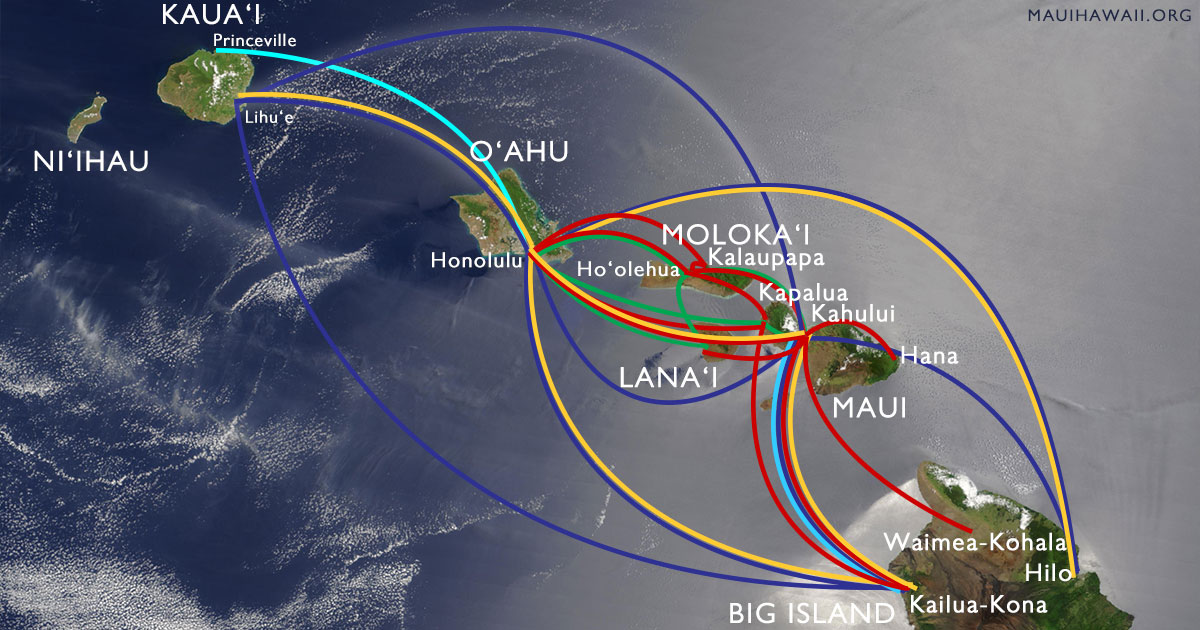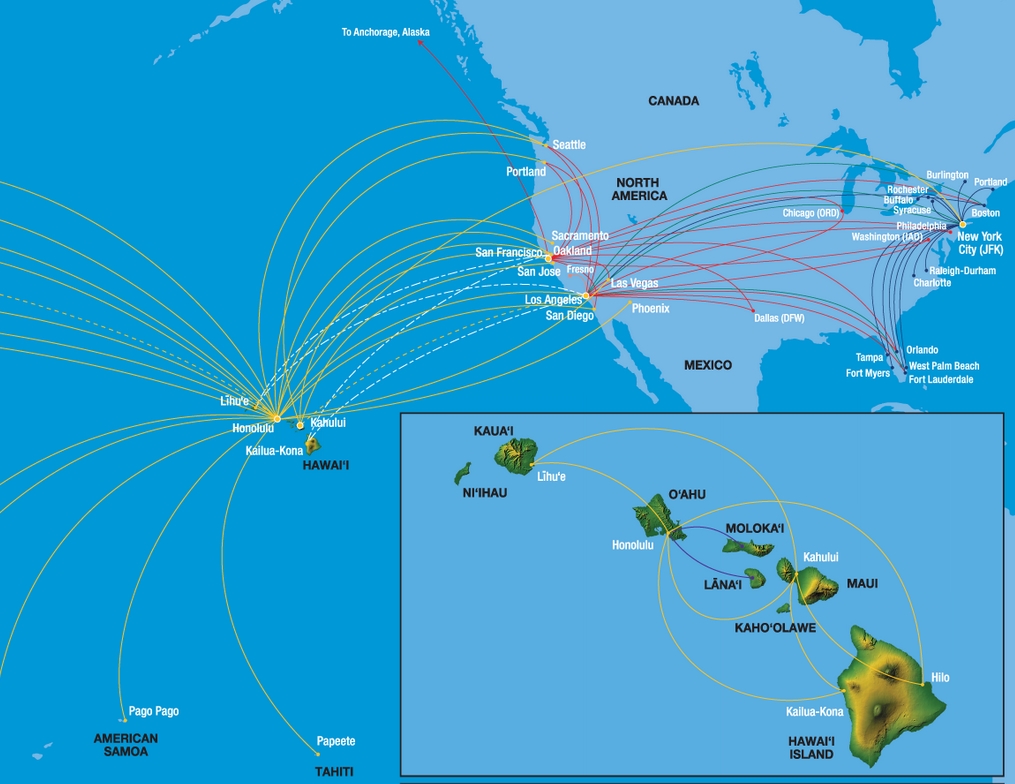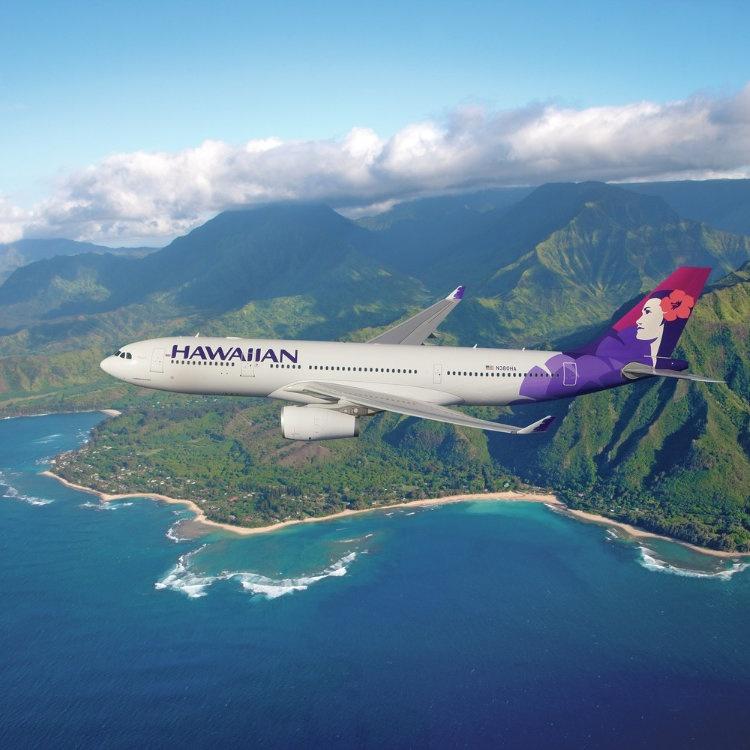A Glimpse into Hawaiian Skies: Navigating Flights to the Islands in 2025
Related Articles: A Glimpse into Hawaiian Skies: Navigating Flights to the Islands in 2025
Introduction
With enthusiasm, let’s navigate through the intriguing topic related to A Glimpse into Hawaiian Skies: Navigating Flights to the Islands in 2025. Let’s weave interesting information and offer fresh perspectives to the readers.
Table of Content
A Glimpse into Hawaiian Skies: Navigating Flights to the Islands in 2025
![Southwest Flights & Routes To Hawaii - A Complete Guide [2024]](https://upgradedpoints.com/wp-content/uploads/2022/09/Southwest-Hawaii-Flights.png?auto=webpu0026disable=upscale)
The allure of Hawaii, a tropical paradise renowned for its breathtaking landscapes, vibrant culture, and unparalleled relaxation, continues to draw travelers from across the globe. As we approach 2025, the landscape of air travel to Hawaii is evolving, offering travelers a range of options and considerations. This exploration delves into the anticipated trends, factors influencing flight choices, and practical tips to ensure a smooth and enjoyable journey to the Hawaiian islands.
The Shifting Landscape of Hawaiian Air Travel:
The aviation industry is in a constant state of flux, driven by technological advancements, evolving consumer preferences, and environmental considerations. Looking ahead to 2025, several key factors will shape the air travel experience to Hawaii:
1. Sustainability Takes Flight:
Environmental consciousness is growing, and the aviation sector is responding. Airlines are increasingly investing in sustainable practices, including the use of biofuels, fuel-efficient aircraft, and carbon offset programs. This shift towards eco-friendly travel will likely influence flight choices, with travelers favoring airlines committed to reducing their environmental footprint.
2. Technological Advancements:
Technology is revolutionizing the travel experience, offering enhanced convenience and personalization. Expect to see:
- Improved Flight Tracking and Communication: Real-time flight information, seamless check-in procedures, and personalized communication will enhance the overall travel experience.
- Enhanced In-Flight Entertainment: Streaming services, interactive games, and personalized content will transform in-flight entertainment into a more engaging experience.
- Automated Check-in and Baggage Handling: Automated processes will streamline check-in procedures and baggage handling, reducing wait times and potential for errors.
3. Increased Connectivity:
Competition within the aviation industry is fierce, leading to increased flight frequency and new routes. This translates to greater flexibility for travelers, with more options to choose from and potentially lower fares. Expect to see expanded connections to smaller Hawaiian islands and new international routes connecting Hawaii to destinations in Asia and the Pacific.
4. Focus on Passenger Experience:
Airlines are prioritizing passenger comfort and satisfaction. Expect to see:
- Enhanced Comfort: Larger seats, more legroom, and improved cabin amenities will contribute to a more pleasant flight experience.
- Personalized Services: Tailored services catering to individual preferences, such as dietary needs, entertainment choices, and language assistance, will enhance the travel experience.
- Improved Connectivity: High-speed Wi-Fi and access to mobile devices will allow travelers to stay connected throughout their journey.
Factors Influencing Flight Choices:
When planning a trip to Hawaii, travelers face a multitude of choices, from airlines and departure cities to flight duration and price. Here are some factors to consider:
1. Departure City and Airlines:
The choice of departure city and airline can significantly impact flight duration, price, and available connections. Major airlines with extensive networks, such as Hawaiian Airlines, United Airlines, and Delta Air Lines, offer a broad range of flights to Hawaii. Smaller regional airlines may offer more affordable options but might have limited flight schedules and connections.
2. Flight Duration and Layovers:
Direct flights to Hawaii are generally available from major cities on the US mainland. However, connecting flights with layovers might be necessary for travelers departing from smaller cities. Flight duration and layover times should be considered, especially for those with time constraints or sensitivities to air travel.
3. Price and Value:
Price is a primary factor for many travelers. Airline fares can fluctuate significantly depending on the time of year, demand, and competition. Consider booking flights in advance, during off-peak seasons, or utilizing travel search engines to find the best deals.
4. Airline Amenities and Services:
Airlines offer varying levels of comfort and services. Factors to consider include:
- Seat Comfort: Legroom, seat width, and reclining capabilities are crucial for long-haul flights.
- In-Flight Entertainment: Movies, TV shows, music, and games can enhance the flight experience.
- Food and Beverage: Meal quality and beverage options can vary significantly between airlines.
- Baggage Allowance: Check the airline’s baggage allowance policy to avoid extra fees.
FAQs Regarding Flights to Hawaii in 2025:
1. What are the most popular departure cities for flights to Hawaii?
Major cities on the US mainland, including Los Angeles, San Francisco, Seattle, Chicago, Denver, Dallas, and New York, offer the most frequent and direct flights to Hawaii.
2. What airlines offer the most flights to Hawaii?
Hawaiian Airlines, United Airlines, Delta Air Lines, Southwest Airlines, and Alaska Airlines are among the major airlines offering frequent flights to Hawaii.
3. What is the average flight time to Hawaii from the US mainland?
Flight duration varies depending on the departure city and destination island. Average flight times range from 5 to 8 hours.
4. Are there any new routes or airlines anticipated to be operating flights to Hawaii in 2025?
The aviation industry is constantly evolving, and new routes and airlines are always emerging. Stay updated on industry news and airline announcements for the latest information.
5. What are the best times of year to fly to Hawaii for the most affordable fares?
Shoulder seasons, such as spring (April-May) and fall (September-October), generally offer more affordable fares compared to peak seasons.
Tips for Navigating Flights to Hawaii in 2025:
1. Book in Advance: Secure your flights early, especially during peak seasons, to secure the best fares and availability.
2. Utilize Travel Search Engines: Compare prices from multiple airlines and travel agents to find the best deals.
3. Consider Connecting Flights: Exploring connecting flights from smaller cities can offer more affordable options.
4. Check Baggage Allowances: Verify baggage allowance policies to avoid extra fees.
5. Sign Up for Airline Newsletters: Receive alerts about special offers and promotions.
6. Pack Smart: Pack light to avoid excess baggage fees and maximize comfort.
7. Stay Informed: Monitor flight status and any potential delays or changes.
8. Enjoy the Journey: Embrace the journey and arrive in Hawaii relaxed and ready to explore.
Conclusion:
Flights to Hawaii in 2025 will be shaped by technological advancements, sustainable practices, and an unwavering focus on passenger experience. Travelers can expect greater connectivity, enhanced comfort, and personalized services, making the journey to paradise more enjoyable than ever before. By staying informed, planning ahead, and utilizing available resources, travelers can navigate the skies to Hawaii with ease and embark on an unforgettable island adventure.







![Southwest Flights & Routes To Hawaii - A Complete Guide [2022]](https://upgradedpoints.com/wp-content/uploads/2021/01/Southwests-Routes-to-Hawaii-2048x1156.png)
Closure
Thus, we hope this article has provided valuable insights into A Glimpse into Hawaiian Skies: Navigating Flights to the Islands in 2025. We appreciate your attention to our article. See you in our next article!
